Organization Trends, June 2016
By Art Harman
Summary: American leadership in space exploration helped create and fuel the high-tech boom that led U.S. global competitiveness since the early 1960s. NASA returned to our national prosperity and national security far more than the investments we made in the agency. We beat the Soviets to the Moon and pioneered the way for many commercial ventures. NASA was preparing to take Americans back to the Moon and on to Mars—until President Obama took office and had a very different objective in mind.
The National Aeronautics and Space Administration used to be on the cutting edge of science, leading the way in space exploration and having an outsized impact on technological progress worldwide in the process. But today NASA is a shadow of its former self. President Obama isn't interested in anything unless it advances his so-called social justice agenda. For example, left-wingers in general don't like U.S. soldiers fighting wars; they prefer the armed forces performing social work on humanitarian missions. Sending Americans to Mars or beyond doesn't move the leftist ball forward.
So NASA's costly manned space exploration programs were low-hanging fruit for an administration whose primary interest is in making government bigger and more centralized. The more NASA is cut, the more the Obama administration can spend on welfare programs to buy more votes by expanding the ranks of the government-dependent.
But instead of baldly stating his objectives, President Obama has simply put NASA on the back burner, turning it increasingly into an agency disseminating left-wing political propaganda for mass consumption.
Remember NASA's glorious past
The world held its collective breath on July 20, 1969 as Neil Armstrong took the first step on the Moon and proclaimed, "That's one small step for a man, one giant leap for mankind." Generations since benefitted from American-led advances in technology, medicine, and manufacturing, as humanity entered the space age. The space program is "American exceptionalism" defined, and NASA has continued to benefit America by carrying out its official mission: "To pioneer the future in space exploration, scientific discovery and aeronautics research."
President Obama subverted this mission to concentrate on global warming extremism, Muslim outreach, missions to nowhere, and a future almost devoid of the giant leaps and planetary probes that rightly awed us for decades and advanced America's competitiveness in high technology. (For a riveting history of the lunar program and the way it overcame immense technological and managerial challenges, see Apollo by Charles Murray and Catherine Bly Cox.)
The Hijacking
Here's how it went down: In early 2010, Obama cancelled the Constellation program (already a reported $10 billion and seven years in progress) and its Ares I and Ares V rockets, the Orion spacecraft, the Altair lunar lander, and even America's plans to return to the Moon and go on to Mars.
With that, space exploration was dead, and it may remain so for a decade or longer.
To create the appearance that America still has a space program, a project was invented to spend the next 10 to 15 years planning one single mission to a fragment of an asteroid.
A bipartisan majority in Congress united against Obama's destruction—partially. While Congress didn't have the courage to force NASA to restore the plans and hardware required to return to the Moon, lawmakers did save the two most critical elements of the program, the Orion spacecraft and the Ares V rocket, and approved funding for commercial crew launches. The Ares V Moon-Mars rocket was renamed the "Space Launch System" (SLS) and was somewhat improved. Congress's apparent goal was to proceed with the core elements of the program to allow the next president to restore NASA's mission of space exploration.
While this was happening, NASA Administrator Charles Bolden, a former astronaut, U.S. Marine Corps flag officer, and test pilot, was making diversionary excuses for the cancellation of manned space exploration and carrying out President Obama's orders. In July 2010, Bolden explained to Al-Jazeera:
When I became the NASA administrator, [President Obama] charged me with three things. One, he wanted me to help re-inspire children to want to get into science and math; he wanted me to expand our international relationships; and third, and perhaps foremost, he wanted me to find a way to reach out to the Muslim world and engage much more with dominantly Muslim nations to help them feel good about their historic contribution to science, math and engineering.
Michael Griffin, who ran NASA in President George W. Bush's second term, responded to this astonishing notion by describing the Muslim outreach initiative as a "perversion" of the agency's mission:
"NASA was chartered by the 1958 Space Act to develop the arts and sciences of flight in the atmosphere and in space and to go where those technologies will allow us to go," Griffin said. "That's what NASA does for the country. It is a perversion of NASA's purpose to conduct activities in order to make the Muslim world feel good about its contributions to science and mathematics" (Truth Revolt, Feb. 20, 2015, http://www.truthrevolt.org/news/flashback-obama-turns-nasa-muslim-outreach-program).
Nowhere on Bolden's list was advancing NASA's mission of space exploration and remaining the world leader in technological innovation.
From the Moon to Global Warming
So if NASA isn't taking Americans to the Moon or Mars, where is NASA headed? Unlike welfare and entitlement programs, NASA's overall budget has been relatively flat in the Obama years. It was $17.78 billion in 2009 and fell to $16.86 billion in 2013. For the current fiscal year the figure is $19.3 billion, but the total is projected to fall to $18.8 billion in 2017.
Sen. Ted Cruz (R-Texas) provided numerical proof that NASA's mission was hijacked to push radical global warming theories, "In the last 6 years…we've seen earth sciences increase 41 percent, and we've seen exploration and space operations—what should be the core mission, what NASA exists to do—decrease 7.6 percent." Earth Sciences is the primary NASA department for global warming activities.
In 2012, 49 former NASA astronauts and distinguished scientists wrote a letter asking Administrator Bolden to stop using NASA to push radical global warming theories. They warned that NASA's "advocacy of an extreme position, prior to a thorough study" puts at risk "the exemplary reputation of NASA, NASA's current or former scientists and employees, and even the reputation of science itself."
Who's behind this?
Who's behind this change of goals for NASA? Certainly President Obama, who promised in 2007 to dramatically cut funds for NASA's Constellation rockets. That money would have helped finance his proposed $18 billion "Lifetime Success Through Education" plan which included a scary "Pre-School Agenda that Begins at Birth," and would require "all students in grant recipient districts…to engage in some form of community service"—that is, in forced volunteer work.
Once elected, Obama kept his campaign promise to cancel long-existing plans to return to the Moon and go on to Mars. This decision may derive from his "post-American world" ideology, which manifested itself when he exhibited a pained reluctance even to say the words, "American exceptionalism."
How better to demonstrate that the U.S. is no longer a superpower than to kill American leadership in space, or to give other nations a decade's head start in space?
Meet "Dr. Death," Obama's Science Advisor, John Holdren
Dr. John P. Holdren is Obama's Science Advisor and the Director of the Office of Science and Technology Policy. Science policy includes space policy, of course.
Holdren was an odd choice for the post. He is co-author, along with oft-discredited doomsayer Paul Ehrlich, of Human Ecology: Problems & Solutions, a book that looks favorably on reducing Americans to North Korean-style poverty; implementing Chinese-style forced abortion and sterilization laws; and even putting sterilizing poisons in water and food. He argued in the book that a newborn baby is merely a potential human being. Holdren contemplates enforcing his misanthropic proposals with a United Nations-style global army.
Excerpts from Holdren's shocking book include:
- "The fetus, given the opportunity to develop properly before birth, and given the essential early socializing experiences and sufficient nourishing food during the crucial early years after birth, will ultimately develop into a human being."
- "Human values and institutions have set mankind on a collision course with the laws of nature. Human beings cling jealously to their prerogative to reproduce as they please—and they please to make each new generation larger than the last—yet endless multiplication on a finite planet is impossible. Most humans aspire to greater material prosperity, but the number of people that can be supported on Earth if everyone is rich is even smaller than if everyone is poor."
- "A massive campaign must be launched to … de-develop the United States. De-development means bringing our economic system (especially patterns of consumption) into line with the realities of ecology and the global resource situation. Resources and energy must be diverted from frivolous and wasteful uses in overdeveloped countries to filling the genuine needs of underdeveloped countries."
- "[A] comprehensive Planetary Regime could control the development, administration, conservation, and distribution of all natural resources. The Planetary Regime might be given responsibility for determining the optimum population for the world and for each region … the Regime would have some power to enforce the agreed limits."
- "The third approach to population limitation is that of involuntary fertility control. Several coercive proposals deserve discussion.… Adding a sterilant to drinking water or staple foods is a suggestion that seems to horrify people more than most proposals for involuntary fertility control."
So what does a totalitarian global warmist have to do with NASA and the president's agenda?
Perhaps everything. Tearing down NASA's bold plans for American space exploration may fit into both Holdren's and Obama's shared anti-American and anti-science ideology, and together the two men have made serious progress towards their apparent goal of hijacking NASA's mission.
Poverty, Hunger, World Peace—and China: Lori Garver, NASA's Deputy Administrator
Lori Garver was Obama's space policy advisor on his 2008 campaign and then led the Presidential Transition Agency Review Team for NASA. After the election, she was rewarded with the position of Deputy NASA Administrator.
While four-time shuttle astronaut Charles Bolden became NASA's Administrator, many saw Garver as the ideological and policy leader who implemented the president's extreme global warming and "post-American world" visions at NASA, with Administrator Bolden serving more as the manager and public face of the space agency. Indeed at least one candidate for Administrator reportedly refused the position because the candidate didn't want to work with Garver.
Garver revealed NASA's hijacked destination when she outlined the administration's vision for NASA's transformation in a March 2010 speech to the American Astronautical Society. The president's plans "will enable NASA to align with the priorities of the nation and to more optimally contribute to our Nation's future. These key national priorities that I am referring to are: Economic development—poverty, hunger, jobs. International leadership/geo-politics—world peace. Education—societal advancement. Environment—future of planet and humanity."
In a congressional hearing later the same month, Rep. John Culberson (R-Texas) took Garver's agenda to task:
[Garver said that] NASA's priorities are to 'fight poverty, promote world peace and societal advancement, and protect the environment'; I'd suggest to you that Ms. Garver has completely lost sight of the core mission of NASA, which is to preserve and protect America's leadership in manned space, manned and robotic space exploration; to pioneer the future in space exploration, scientific discovery, and aeronautics research.
Garver left NASA in September 2013, but continued her ideological battle against the space program by attacking the Space Launch System rocket and the next Mars rover. She belittled the rocket program by asking "where is it going to go?" After more than four years at NASA, she knew but perhaps disagreed: SLS will take Americans to the Moon and Mars.
In a briefing I attended in 2012, Garver spoke dreamily of NASA working closely with China's military-led space program. Because of Garver's and Bolden's initial efforts towards cooperation with China, Congress was forced to outlaw any cooperation to prevent China from plundering our highest technology and using it against us in their military and undercutting American commercial space enterprises like Space X.
In 2011 Congress approved legislation forbidding NASA from working with Communist China. According to an official summary, Public Law 112-55, Title V, section 539, "prohibits the use of any NASA or [White House Office of Science and Technology Policy] funds to participate in any way in any program with China or any Chinese-owned company, unless specifically authorized by law."
"We know that China is an active, aggressive espionage threat," now-retired Rep. Frank Wolf (R-Va.) has said. "I suspect that this focus on stealing space and flight-based technology explains at least some of the major advances that the Chinese space program has made over the past few years."
The ideological war against NASA would resume if Garver were brought back under a new Democrat administration.
The Anti-Civilization Global Warming "Godfather"—with an Arrest Record
James Hansen was the head of NASA's Goddard Institute for Space Studies until 2013. He became known as a taxpayer-funded activist for radical global warming theories and carbon taxes. Rather than use scientific methodology to prove his case, he used alarmist predictions of dramatic and unsubstantiated temperature and sea level increases to try to scare opponents into silence.
For example, Hansen told the House Select Committee on Energy Independence and Global Warming in 2008: "CEOs of fossil energy companies know what they are doing and are aware of long-term consequences of continued business as usual. In my opinion, these CEOs should be tried for high crimes against humanity and nature."
In an op-ed in the Guardian on Feb. 14, 2009, he ranted that "The trains carrying coal to power plants are death trains. Coal-fired power plants are factories of death."
Hansen used his stature as a NASA scientist to gain media attention by getting arrested at global warming demonstrations, a misuse of his position of trust. He wrote a supportive statement for the book Time's Up!, saying author Keith Farnish "has it right: time has practically run out, and the 'system' is the problem. Governments are under the thumb of fossil fuel special interests—they will not look after our and the planet's well-being until we force them to do so, and that is going to require enormous effort –Professor James Hansen, GISS, NASA[.]"
The book Hansen endorsed calls for terrorist-type actions to destroy sea walls and dams, "razing cities to the ground," and ending civilization. Not just ending the radical Left's hated "western civilization" or even creating a North Korean-style prison society where only the elite receive the benefits of modern comforts, but ending the entirety of what the author calls "industrial civilization" itself.
Hansen's predictions of massive sea-level rises over the next 50 years were too radical even for the notorious Global Warming advocate Michael Mann, who said they were "prone to a very large 'extrapolation error.'" Mann is the taxpayer-funded so-called climate scientist who invented the discredited "hockey stick" measure of temperature, and who was accused of altering temperature data in the "Climategate" scandal. One propaganda technique employed by global warming activists is to scare people by issuing apocalyptically exaggerated predictions.
While there are no memos or confessions by these ideological warriors that they intended to hijack NASA for their own radical ideological purposes, the results and budgets speak for themselves.
Alarmist James Hansen's replacement, Gavin Schmidt
Gavin Schmidt is James Hansen's replacement as head of the Goddard Institute. A self-described "liberal Jewish atheist from New York City," he shares Hansen's warming alarmism, though he uses more careful language. For example, he predicts a 3-6 meter sea-level rise in this century, vastly higher than the 7.5 inches per century predicted in the 2014 paper, "Global Sea Level Behavior of the Past Two Centuries," by Jevrejeva, Moore, Grinsted, Matthews, and Spada.
In 2009, a commenter on Schmidt's website, realclimate.org, asked: "Gavin, In your opinion, what percentage of global warming is due to human causes vs. natural causes?"
The response: "Over the last 40 or so years, natural drivers would have caused cooling, and so the warming there has been (and some) is caused by a combination of human drivers and some degree of internal variability. I would judge the maximum amplitude of the internal variability to be roughly 0.1 deg C over that time period, and so given the warming of ~0.5 deg C, I'd say somewhere between 80 to 120% of the warming. Slightly larger range if you want a large range for the internal stuff. – gavin." (available at http://www.realclimate.org/?comments_popup=1853)
Michael Mann lauded the selection of Schmidt to replace Hansen. "Gavin is an ideal successor to James Hansen, one of the few individuals I know who can rightfully fill those shoes. NASA can be confident that in Gavin they have found a director who can lead the Goddard Institute for Space Sciences forward in the years and decades ahead as we continue to grapple with the scientific and societal issue of human-caused climate change."
Manned space exploration was indeed halted. Congress saved the rocket, but Obama killed plans to use it for the Moon or Mars. Extreme global warming theories robbed increasing amounts of NASA's time and budget, and NASA's focus was further directed away from the advancement of American science, technology, and space exploration.
Where do your NASA tax dollars go?
Most would hope and expect they would be invested in rovers on Mars, astronauts on the space station, Hubble Telescope photos, and preparing to send Americans to the Moon and Mars. Due to the efforts of NASA's global warming extremists like James Hansen, some of NASA's funds get wasted on false science, such as: "A Minimal Model for Human and Nature Interaction," which is a 2012 partially NASA-funded study, published in the journal Ecological Economics, that strayed light years beyond space exploration. The anti-free market, pro-class warfare study tried to prove that western society would collapse because of the "elites."
The authors admitted the study was a "thought experiment" and acknowledged that "this work was partially funded through NASA/GSFC [Goddard Space Flight Center] grant NNX12AD03A." They pitted against each other "commoners," "wealth," "elites," "nature" and "population." Then they employed a "Predator-Prey Model" that measured in "Eco $," to make the case—using only four equations—that "optimal equilibrium [occurs] when Elite population equals zero." The authors invented a "Human and Nature DYnamical model (HANDY)," which "was inspired by the Predator and Prey model," and used the model to predict the collapse of Western civilization.
After the 2012 study was exposed in the media, the authors removed the original study from the Internet and released a more sanitized version. I was able to find a copy of the original.
The authors' conclusions are eerily similar to Time's Up! and Holdren's book, Global Ecology, both of which advocated ending Western civilization.
The Left did not miss the significance of the pro-socialist study, which Derrick O'Keefe, a contributor to the "Ecosocialism Canada" website, promoted in a Tweet: "This NASA-funded study makes case that future is socialism or extinction."
Part of the "HANDY" theory was that "collapse is difficult to avoid…. Elites grow and consume too much, resulting in a famine among Commoners that eventually causes the collapse of society." This rings bizarrely hollow in today's world where obesity, not starvation, afflict increasing percentages of the "commoners" around the world. Indeed, famines outside of natural disasters and wars are mostly limited to dictatorships that use food as a weapon and nationalize or regulate to death the production of food. For example, Venezuela is a lush and fertile jungle, yet the Communist regime has destroyed farming to the extent that even bread and beer are all but memories on the empty grocery store shelves. Free enterprise, not eradicating "elites," is the antidote for famine and societal collapse.
After a flood of criticism, NASA disavowed the study, yet its theme that society is about to collapse without socialism fits with the anti-civilization beliefs of Holdren and Hansen. Socialism or bust.
The International Committee of the Fourth International lauded the study on its World Socialist Web Site, which is affiliated with the pro-Communist Socialist Equality Party: "The HANDY model is notable in that it explicitly recognizes the central importance of class differentiation and inequality in social dynamics, and identifies growing inequality as a major destabilizing factor. Indeed, the model examines scenarios in which social inequality alone can lead to catastrophic societal collapse."
William "Matt" Briggs, an adjunct professor of statistical science at Cornell University and author of Breaking the Law of Averages: Real Life Probability and Statistics in Plain English, debunked the study in a CNS News report:
"Using a predator-prey model, the "Human and Nature Dynamics" (HANDY) study "swaps the wolves for human beings and the deer for 'Nature.' Since "nothing empirical went into these equations," the study's doomsday conclusions "have no applicability whatsoever to humans," Briggs told CNSNews.com.
"All of the flaws—when they give interpretations to all of those letters, the x's, the c's, the Greek letters that they have sprinkled throughout—those interpretations are just pulled out of the sky, and have nothing to do with any real human society. The problem is, all those symbols, they don't mean anything. History also shows that socialist societies whose main goal is egalitarianism are actually more likely to collapse than their capitalistic counterparts."
The next president must shut down global warming advocacy at NASA, including doling out scarce research money for useless and propagandistic studies like this one.
How the Left Profits from NASA
NASA has entered into an almost incestuous relationship with left-wing pro-global-warming organizations—many of them are tax-exempt nonprofits. NASA's respected name on a report, regardless of its merit, conveys the 'gold standard' on even the most alarmist warming report, only because of the high regard the public places in the agency which landed Americans on the Moon and rovers on Mars.
NASA's biased global warming studies have therefore become the respectable "go to" source of material for many radical organizations, used to justify and lend credibility to their theories, to cite in papers and conferences, and to use to raise money for their radical agenda.
NASA produces reports and data by James Hansen and his acolytes, and funds research like the "Socialism or extinction" study, which the nonprofits promote as gospel to justify their radical demands. They give greater exposure to NASA's studies, which creates more demand for new NASA studies, and the cycle continues.
For example, the Natural Resources Defense Council (NRDC) a 501(c)(3) nonprofit, uses NASA information in its Global Warming 101 primer (available at www.nrdc.org/stories/global-warming-101), and it uses a Hansen op-ed to fight the Keystone XL Pipeline. NRDC even used an alarmist NASA cartoon video (available at www.nrdc.org/onearth/were-hot-water) that predicts catastrophic flooding of cities based on James Hansen's sea-level rise theories to argue for greater action and to scare kids. The anti-energy activist organization 350.org is yet another 501(c)(3) that promotes Hansen's papers and data, as well as the United Nations Intergovernmental Panel on Climate Change's works based on NASA data.
The Environmental Defense Fund has 223 pages of NASA information on its website, using America's space agency to enhance its credibility and fundraising. Greenpeace's website has 52 pages, and Al Gore's Climate Reality Project has nine.
Friends of the Earth has 30 pages of NASA materials on its website and used a quote by Hansen to advocate for a carbon tax: "A price on emissions that cause harm is essential."
Skimming the list of other radical environmental groups' websites, the Earth Island Institute has 60 pages of NASA information, and the Sierra Club boasts 554 pages. Even the prestigious National Geographic Society has promoted Hansen's overwrought theories on its website, where Hansen wrote that "recent heat waves that have triggered wildfires, droughts, and heat-related deaths in the United States and around the globe almost certainly would not have occurred without global warming—and will become more routine in coming years."
The Center for American Progress (CAP) was founded by Obama ally John Podesta and is one of the major left-wing think tanks that provides policy support for the president's agenda. CAP has supported the transmogrification of NASA. For example, CAP's lobbying arm, the Center for American Progress Action Fund, promoted an alarmist report by Gavin Schmidt, Hansen's replacement as Goddard Institute director. Schmidt claimed that "2015 will be a scorcher relative to all other years in the record."
NASA Administrator Bolden chose CAP as the venue for an October 2015 speech in which he attacked anyone in the next administration and Congress who may try to restore NASA's focus back to landing American astronauts on the Moon and Mars: "If we change our minds at any time in the next three or four years, which always is a risk when you go through a government transition, my belief is that we're doomed. This is not a time that we can start over." In reality, it was Obama who "started over" by cancelling the plans and rockets to take Americans to the Moon and Mars, and setting an accelerated course towards global warming advocacy.
NASA data is also used as "proof" in the UN's IPCC reports which aim to cripple the economies of western democracies but not those of China and the Third World. NASA then returned the favor by promoting IPCC reports that use NASA data.
In short, NASA's fanciful global warming theories have been used to bestow unearned legitimacy on left-wing advocacy organizations. Their ability to raise funds is enhanced by simply being able to quote a "NASA scientist" and by filling their websites and perhaps fundraising letters with global warming theories from NASA. When the public reads "NASA scientist," they think of astronauts and rocket scientists, not radical professors advocating for the end of civilization.
How do you kill the space program without anyone noticing?
Use the "Emperor's New Clothes" strategy.
If the president proclaims America is on a "Journey to Mars," but kills the plans to get there, no one in the liberal media would dare shout the obvious: "America has no space program!" To assist in this deception, Obama took the step politicians often take to buy cover for unpopular actions: he established a commission to declare that space exploration was "unsustainable."
The "Review of United States Human Space Flight Plans Committee," or more commonly, the "Augustine Commission," produced its report in 2010 at a cost of $3,000,000 to taxpayers.
The report, misleadingly titled, "Seeking a Human Spaceflight Program Worthy of a Great Nation," stated that "the U.S. human spaceflight program appears to be on an unsustainable trajectory. It is perpetuating the perilous practice of pursuing goals that do not match allocated resources." (The report is online at http://www.nasa.gov/pdf/396093main_HSF_Cmte_FinalReport.pdf.) In this writer's opinion, the commission should have concluded that space exploration was a national priority and that the U.S. could certainly afford the required 15 percent in additional NASA spending to make it succeed.
Obama seized upon the conclusion of the commission to cancel programs against the wishes of NASA and astronauts, depriving us of the rockets and spacecraft that would have taken us to the Moon and on to Mars starting about 2020. Unfortunately, many in Congress, the public, and even supporters of the space program were fooled by the Emperor's New Clothes strategy.
The report used to kill space exploration exploited the image and words of President John F. Kennedy from his famous 1961 Rice University speech, where he set America on a course for both the Moon and for generations of American leadership in high technology:
"We choose to go to the Moon in this decade and do the other things, not because they are easy, but because they are hard, because that goal will serve to organize and measure the best of our energies and skills."
Just eight years after President Kennedy's inspirational speech, NASA landed Neil Armstrong and Buzz Aldrin on the Moon.
By contrast, in the nearly eight years of the Obama presidency, all plans and the rockets for exploring the Moon and Mars were scuttled, the space shuttles were grounded before replacements were ready, and American astronauts are still forced to fly to the International Space Station on Russian rockets. NASA was burdened with an essentially impossible-to-accomplish asteroid mission to replace the return-to-the-Moon mission and real plans for Mars. President Kennedy's legacy was betrayed by President Obama.
Sen. Richard Shelby (R-Ala.) was among many in Congress who blasted Obama for killing space exploration. In February 2010 he said:
The President's proposed NASA budget begins the death march for the future of U.S. human space flight. The cancelation of the Constellation program and the end of human space flight does represent change—but it is certainly not the change I believe in. Congress cannot and will not sit back and watch the reckless abandonment of sound principles, a proven track record, a steady path to success, and the destruction of our human space flight program.
Administrator Bolden repeatedly ruled out any missions to the Moon. Why?
Perhaps Obama's worldview is the problem. In 2008, he posed for a photograph holding a book, The Post-American World, by left-wing serial plagiarist Fareed Zakaria. The title sent a signal to America's enemies and adversaries that as president, Obama would reduce our superpower status and cede power and leadership to the tyrannies.
By contrast, space exploration is the ultimate confirmation of "American exceptionalism" and superpower accomplishment.
Bowing to China
Communist China understands the hard- and soft-power benefits of becoming the leader in space exploration and is taking full advantage of the decade's head start afforded by Obama's actions.
To date, China has launched five manned missions to earth orbit, including two to its mini-space station. Many Americans active in space policy seem lulled to sleep by China's apparently slow pace and believe the Chinese will continue moving slowly. But this view stems from a failure to understand the brutal totalitarian regime's strategies of deception and secrecy. Chinese dictators Deng Xiaoping and Jiang Zemin followed such a strategy while quietly building their military strength on the principle of "hide our capacities and bide our time."
The People's Republic is quietly building an Apollo-scale infrastructure and the world's largest rocket factory. This, coupled with their Moon rocket now in design stage, may allow China to conquer the Moon unless the U.S. can quickly recover from Obama's damage.
Chinese officials recently unveiled both a bold timetable to send a rover to Mars by 2021 and also plans for a manned lunar base to mine lunar minerals and Helium-3, a nuclear fusion fuel. If China wants the world to believe it will not lay claim to the Moon, it is setting a poor example by trying to seize the South China Sea, in violation of 400 years of international law and practice.
If President Obama deliberately wanted to give China a head start of a decade or more, or to allow the Chinese to claim the Moon, it is hard to imagine he would have done anything differently during his administration.
Divide and conquer
Beyond killing space exploration, converting NASA into a propaganda agency, and giving our adversaries a decade's head start, Obama killed something perhaps even more important: Unity.
As Obama killed the Constellation program, he made a false statement at the Kennedy Space Center on April 15, 2010, calculated to destroy unity among space experts and advocates:
"I understand that some believe that we should return to the surface of the Moon first, as previously planned, but I just have to say pretty bluntly here, we've been there before! There's a lot more of space to explore and a lot more to learn when we do."
The "been there, done that" line is a case of the "big lie." American astronauts spent only about 12 days on the Moon over three years, so we know essentially nothing about the physiological effects of living in low gravity on Mars for months or years, nor the requirements for conducting life and operations on the surface.
Ever since Wernher von Braun engineered America's course to the Moon, the scientist-devised plan was always to use the Moon to learn how to live on another world, before proceeding to Mars. Once Obama torpedoed the Moon-then-Mars agreement as official policy, various minor but competing ideas spread fast: Go to Mars immediately. Go to asteroids for a decade or longer, then look at Mars. Build a space station in deep space, perhaps to support Lunar and Martian expeditions in decades to come. Spend the next decade doing a few short missions in the vicinity of the Moon. Don't land on Mars but just send astronauts to orbit Mars and run rovers from there.
Some plans were unworkable, while others would not inspire support from Congress or the public. By killing unity, Obama caused advocates of each different idea to fight each other. This alone could prevent the next president from assembling the unity required to re-start space exploration.
There are many compelling reasons for von Braun's Moon-then-Mars "stepping stones" approach. The Moon is far closer and easier to reach. Spacecraft can go to the Moon in 4 days, and be launched or returned at any time. Mars, by comparison is a 6 to 9 month journey and launches can only take place every 26 months. In the event of an emergency on the Moon, astronauts can immediately evacuate and be home in 3 days. This is impossible on Mars because it could be many months until the next launch window allows a return.
Mars has a deadly naturally occurring poison in its soil. Perchlorates make up about 1 percent of the soil in measured areas. If "Mark Watney," the stranded astronaut in last year's movie, The Martian, had used perchlorate-laden soil to grow his potatoes, they would have made him very sick or killed him. These factors don't mean that Mars is uninhabitable, just that we have a lot to learn before sending anyone there, and making the leap to the red planet without an intermediate step would be too great a "giant leap."
Far better to develop and validate all the technology, habitats, and human factors on the Moon, rather than set course for an un-tested 1,000-day mission to Mars—with no early return possibility. Deaths on early missions to Mars could cause humanity to shun Mars for generations. Do it right and America can build a research base on the Moon in the 2020s, and with lessons learned, successfully land on Mars in the 2030s.
Space is a Conservative Priority
America's space program serves the nation in a number of ways. These include supporting national security and the projection of soft power, building international respect, and advancing high technology and basic research fundamental to long-term, worldwide economic competitiveness. Medical inventions derived from space research help people live longer, and your cellular telephone has its roots in the drive to miniaturize electronics for space.
Abandoning space to the tyrannies would endanger U.S. commercial and military satellites, and space so dominated would be hostile to commercial space ventures such as Space X—imagine U.N. restrictions on commercial space, forced profit-sharing with foreign governments, and outright threats such as China currently issues in the South China Sea. Spending on NASA yields far more in technology and inventions for the economy, and it may be the only federal agency that produces a large net benefit to the economy.
Conclusion
President Obama, John Holdren, Lori Garver, and James Hansen have succeeded in their apparent mission to convert NASA's bold exploration and scientific mission into yet another left-wing propaganda-spewing agency. As House Science Committee Chairman Lamar Smith (R-Texas) observed at a 2014 hearing, "there are 13 other agencies involved in climate-change research, but only one that is responsible for space exploration."
The next president must halt the ideological war at NASA and work with Congress to provide the funding to unleash the engineers and astronauts who will rebuild America's leadership in space and high technology for the next generation. The goal should be an "American exceptionalism"-style space program that would truly earn the name given in the Augustine Commission's report: "a human spaceflight program worthy of a great nation."
Art Harman is a Capitol Hill veteran, with over three decades experience directing lobbying, media, and grassroots campaigns, including with the Conservative Caucus. He served as Legislative Director for Rep. Steve Stockman (R-Texas) in the 113th Congress, where he directed legislative priorities, drafted legislation, and advised the congressman on foreign affairs, border security, space and other key issues. A frequent analyst and commentator on the radio, Harman studied foreign policy at the Institute of World Politics.
Sent from my iPad



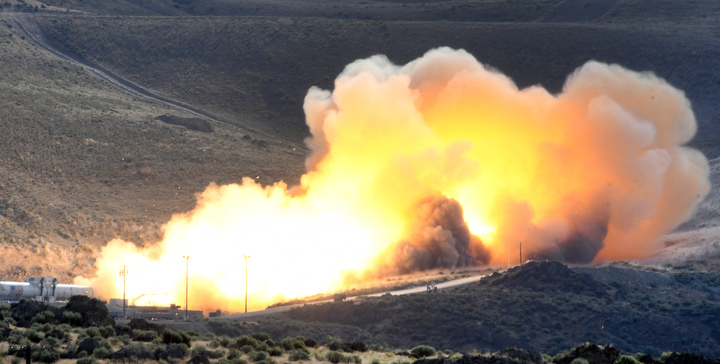
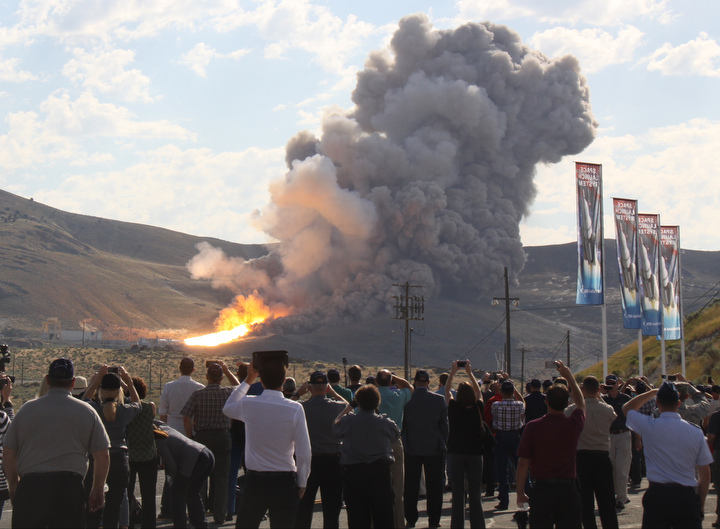
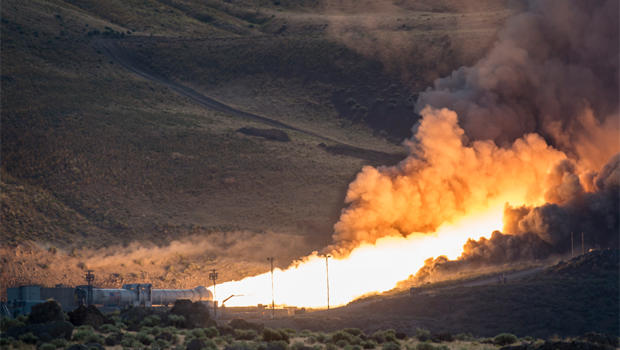

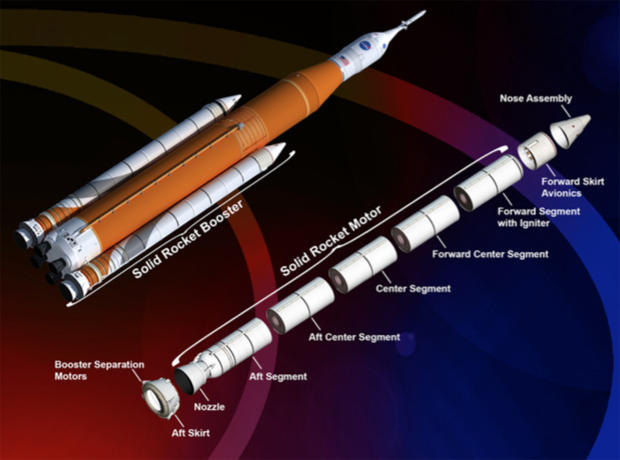

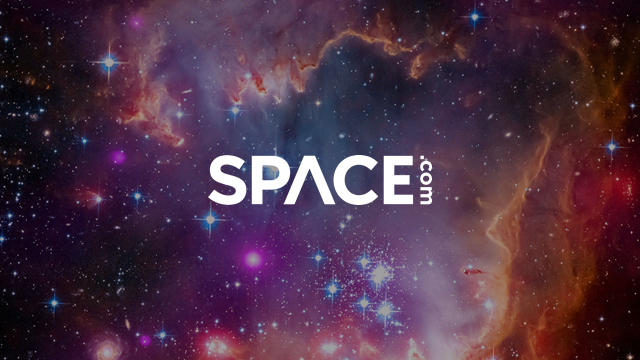
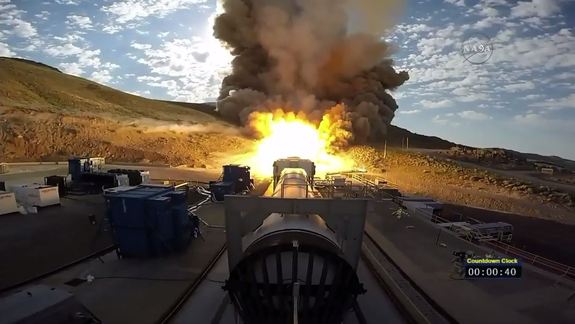
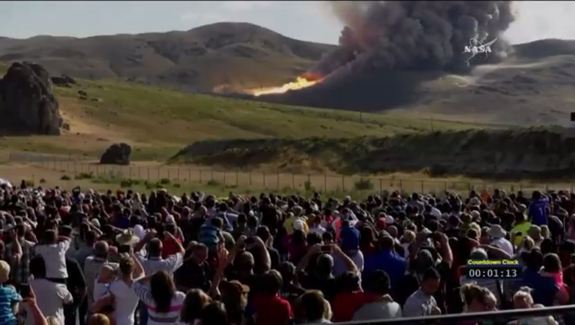
 A five-segment solid rocket booster fires during the Qualification Motor 2 test in Utah June 28. Credit: NASA/Bill Ingalls
A five-segment solid rocket booster fires during the Qualification Motor 2 test in Utah June 28. Credit: NASA/Bill Ingalls 
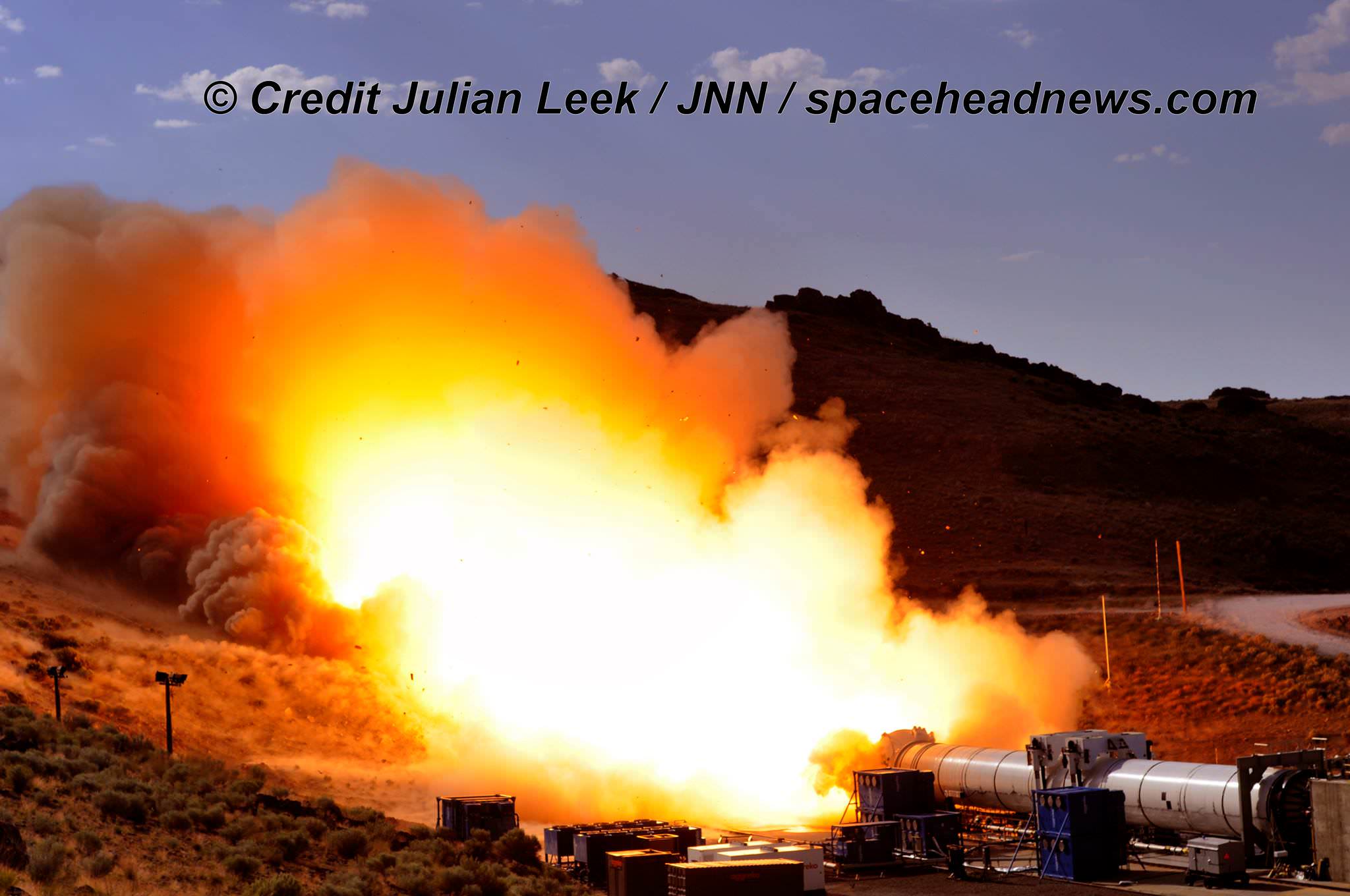
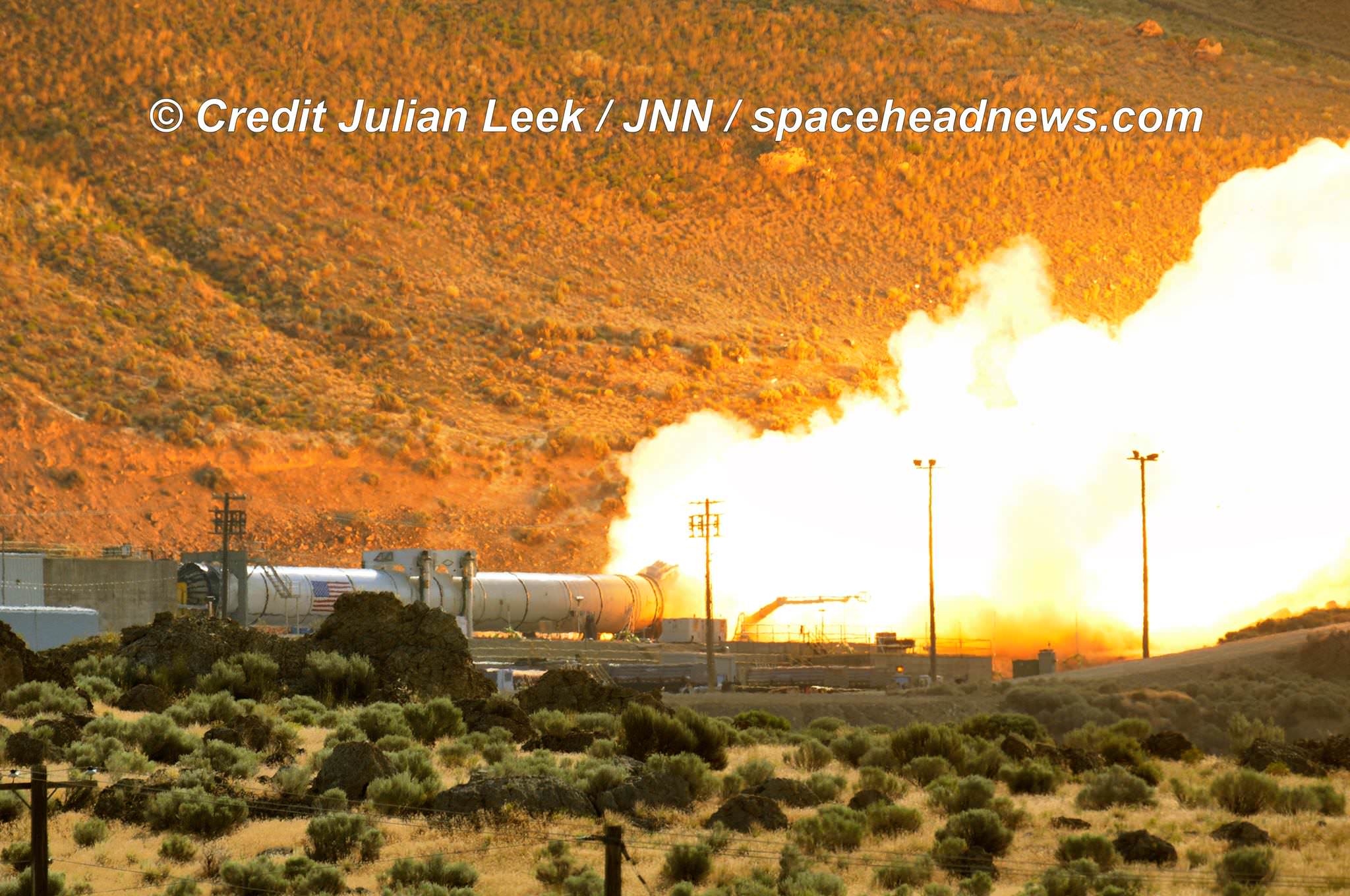
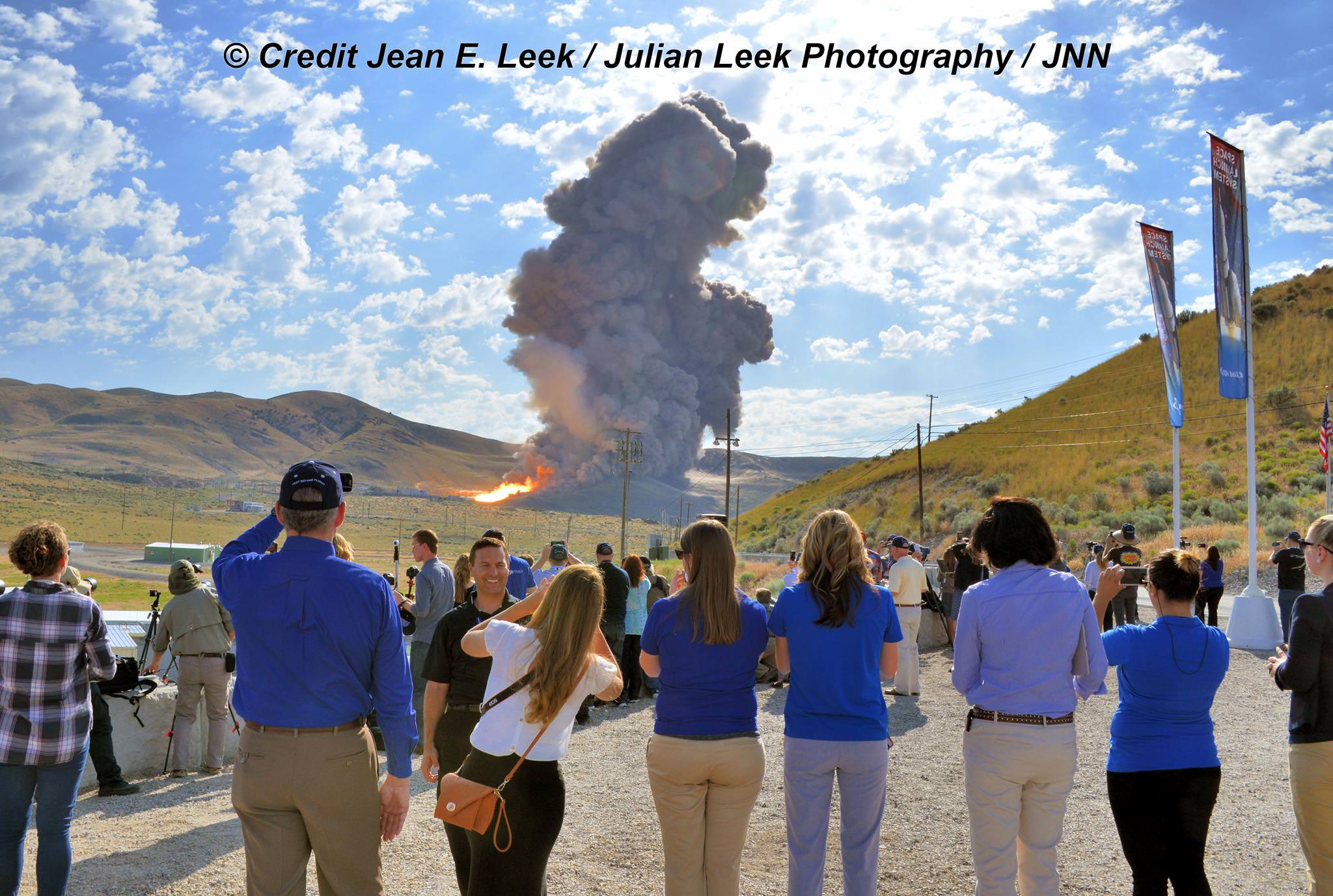

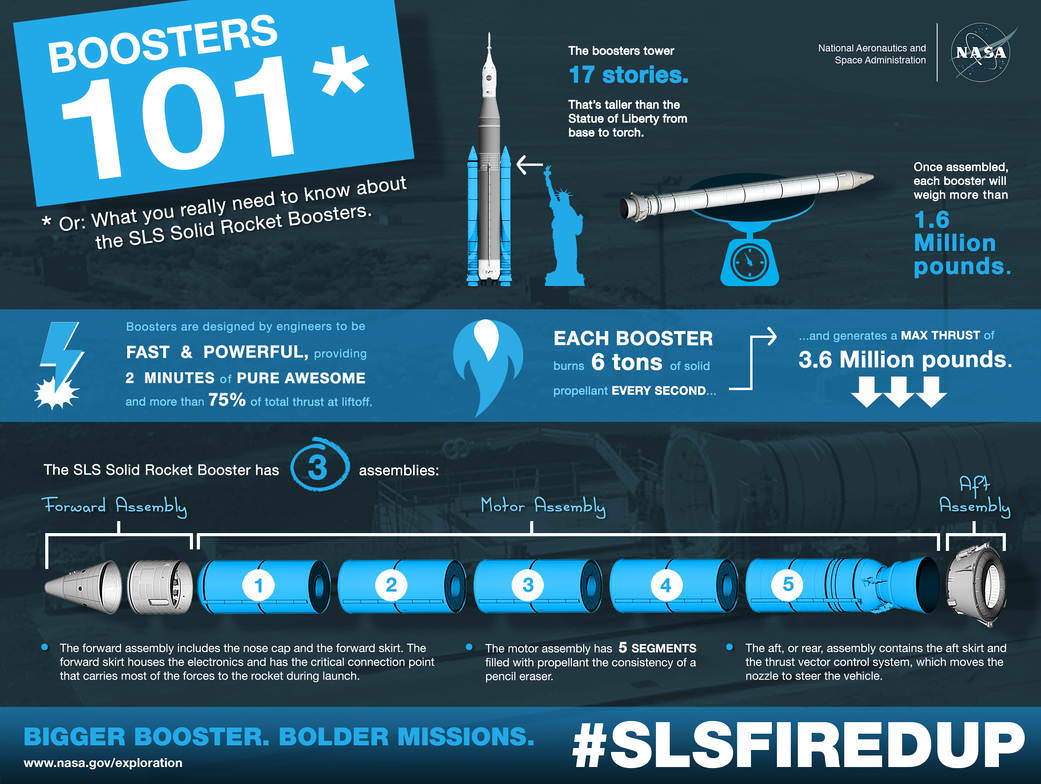
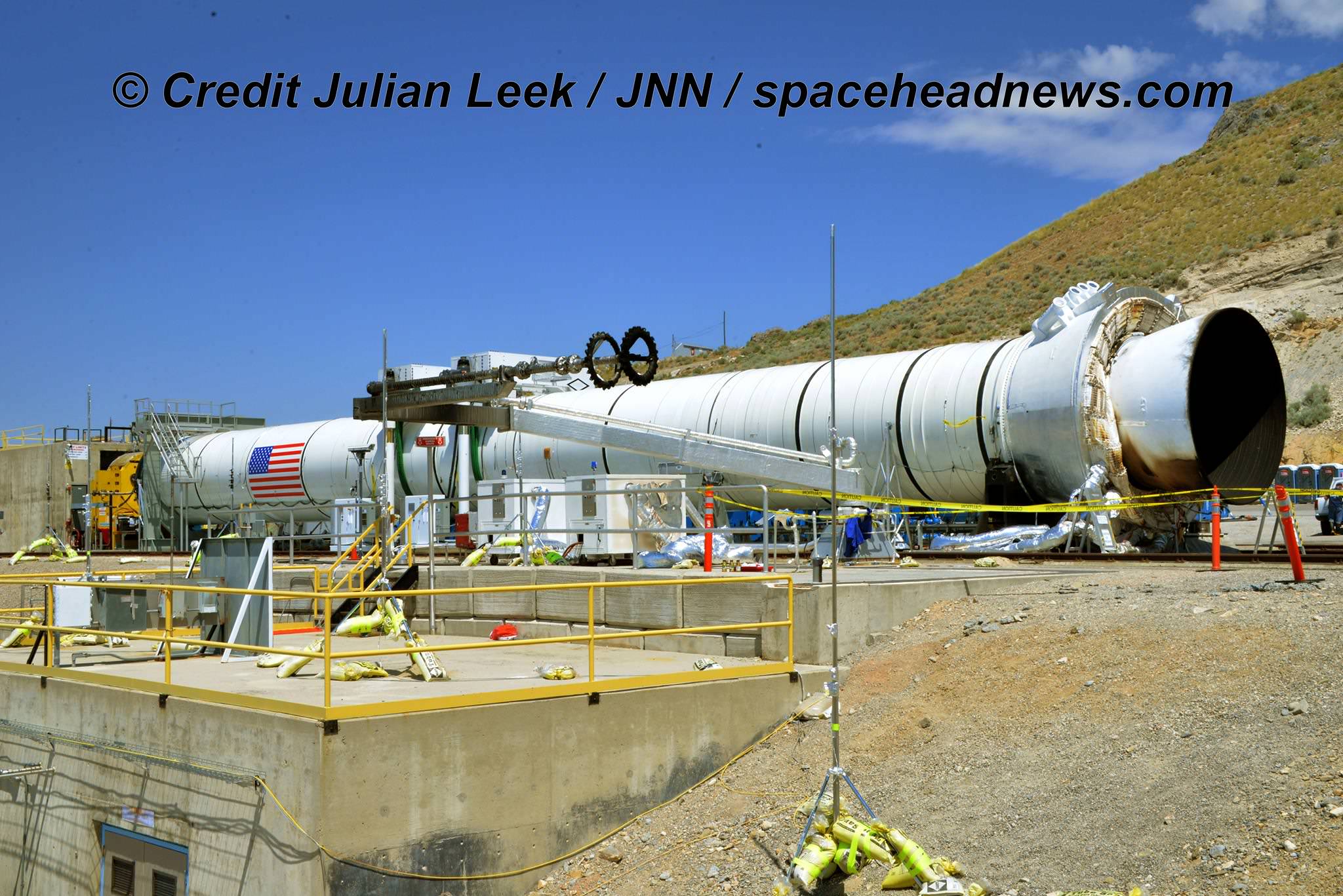

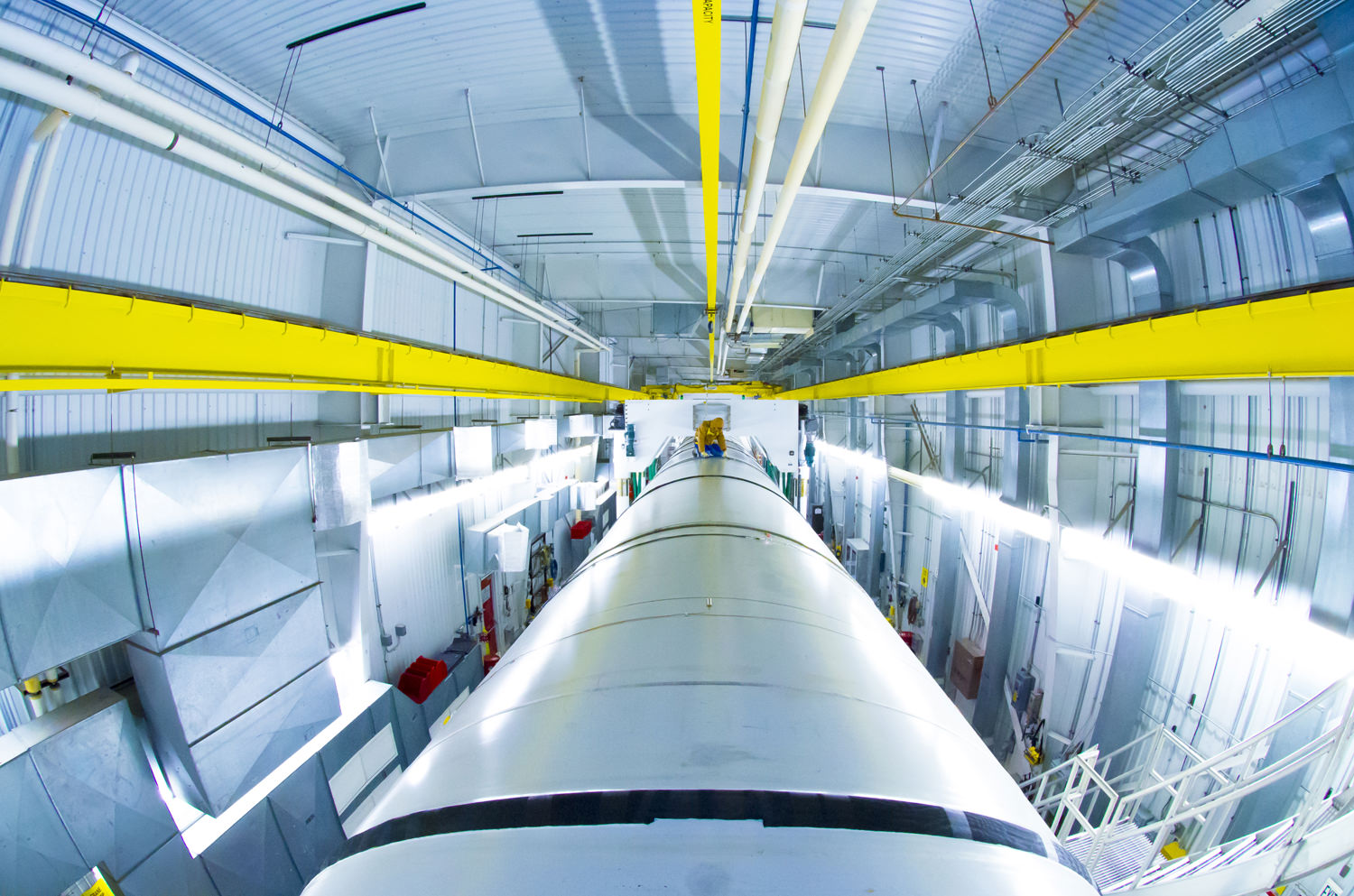
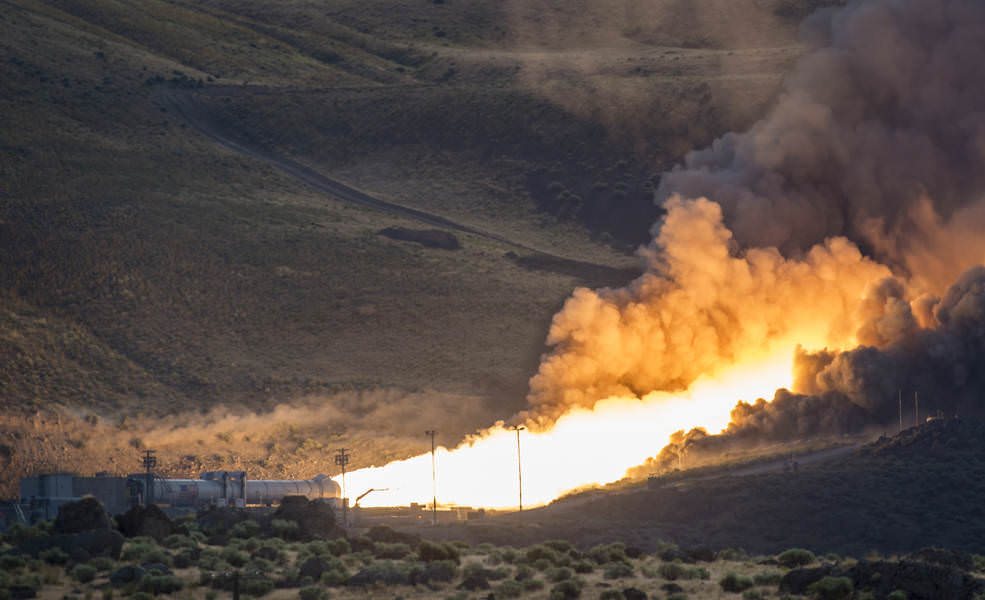
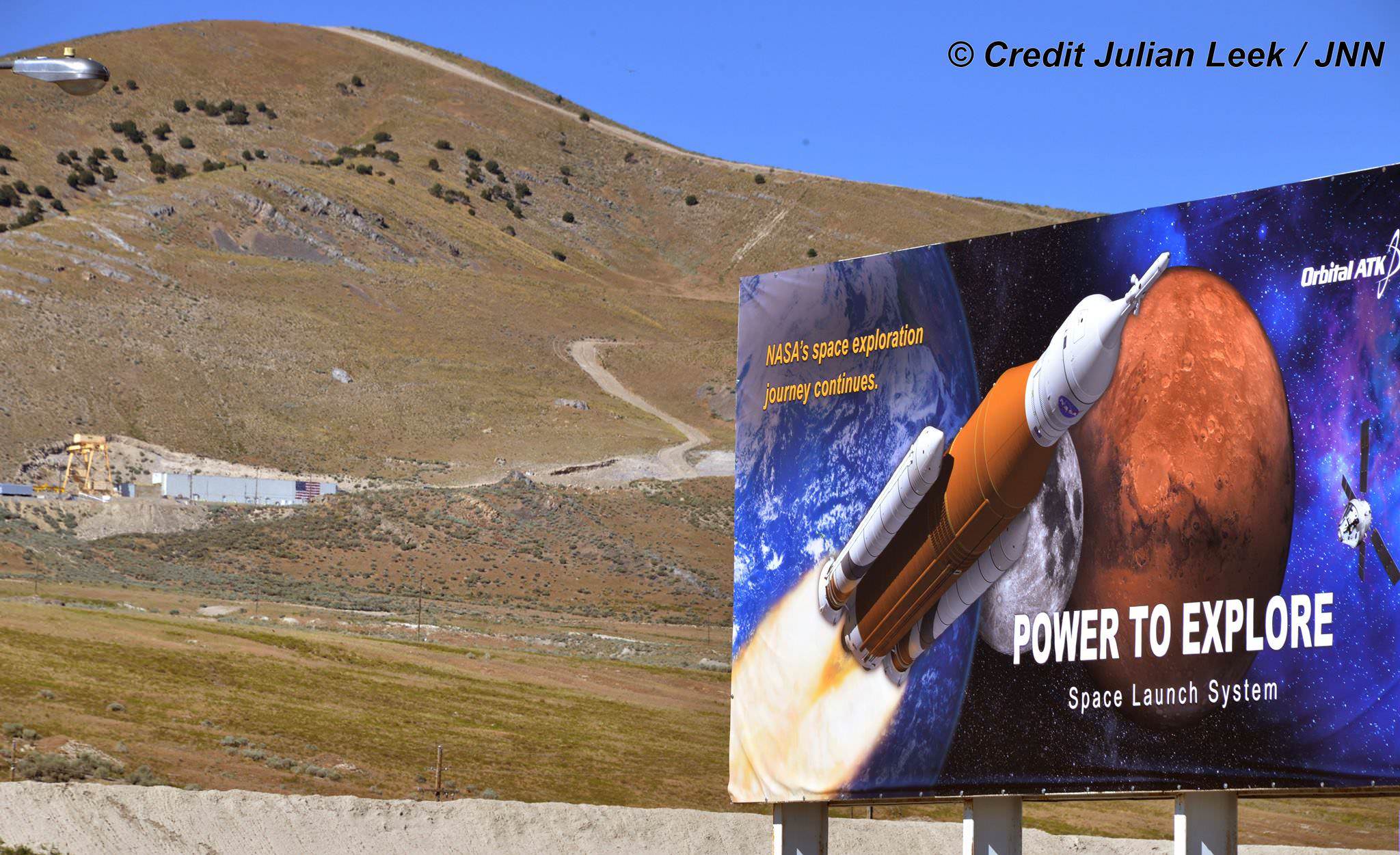
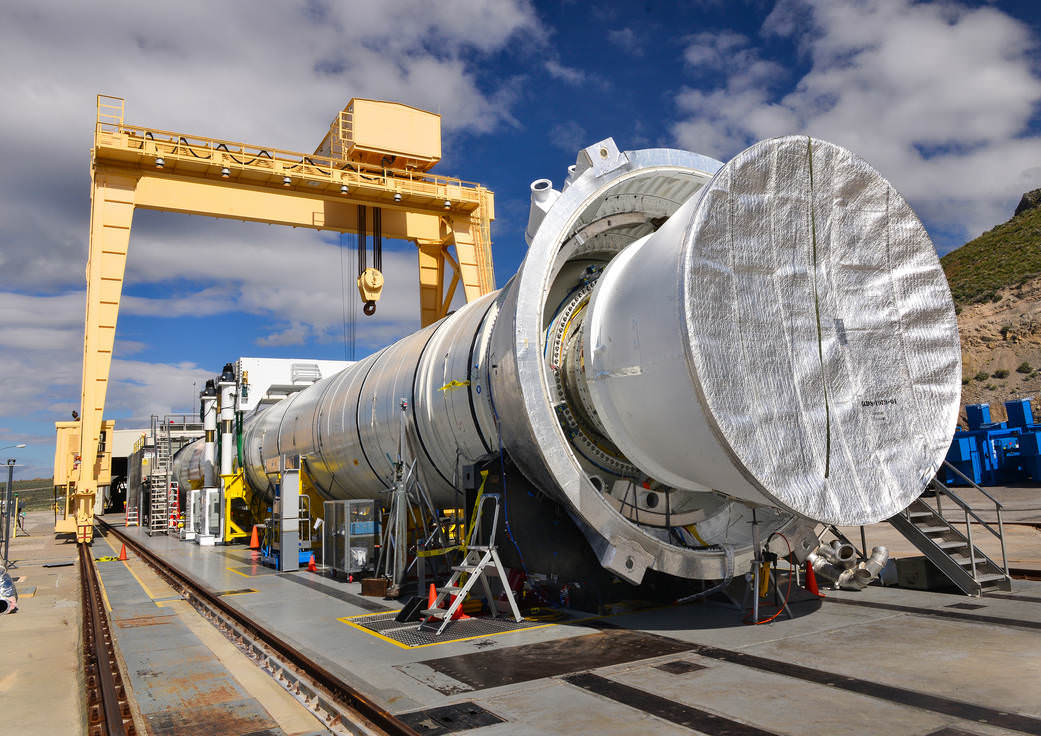
 Universe Today
Universe Today